Every year in October, dedicated ARES/RACES members and emergency communicators meet for the annual Wisconsin ARES/RACES conference. This event, in it’s 18th year, was held at the McMillan Public Library in Wisconsin Rapids. For those that took time out of their day were rewarded with excellent presentations, thoughtful speakers, and plenty of networking. As a regular participant of these conferences, I really enjoy the event and always come away with plenty of ideas to improve our local ARES/RACES group.
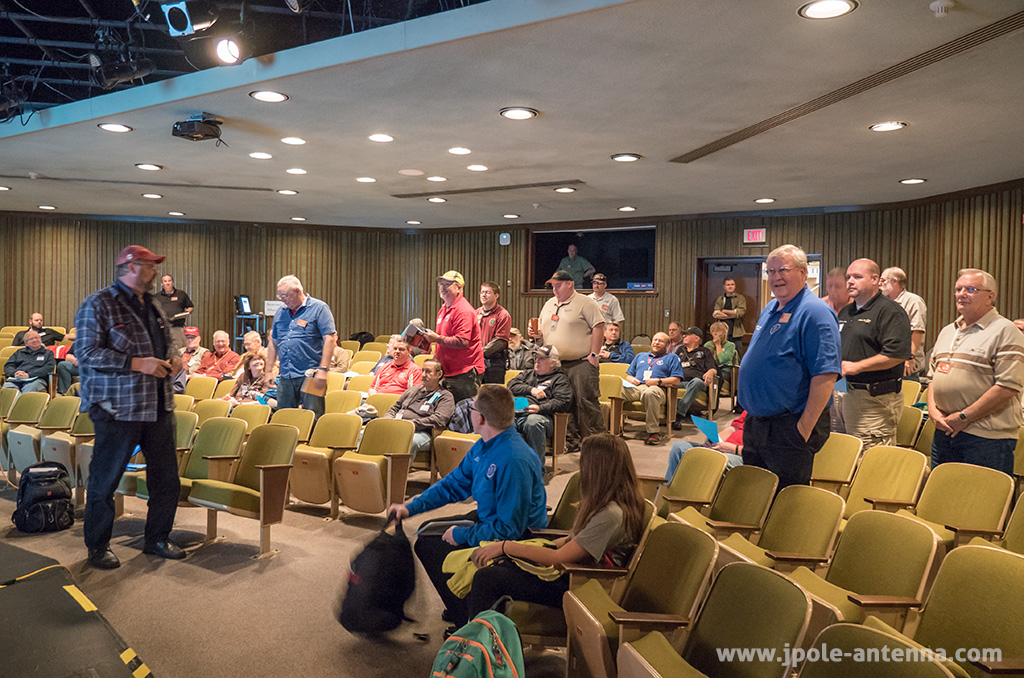 While there was no overarching theme for this year’s event, the speakers did touch on several key concepts: recruitment and retention, working with served agencies, and technology.
While there was no overarching theme for this year’s event, the speakers did touch on several key concepts: recruitment and retention, working with served agencies, and technology.
WeComm Network Update
After the introductions and housekeeping items taken care of, the conference delved into an update of the status of the WeComm, Ltd statewide linked repeater system. For each previous year of the conference, the theme of WeComm was growth. The system had grown from two repeaters in the northeast portion of the state to a 12 repeater system, full time linked, providing nearly complete coverage of State of Wisconsin.
But switching from a growth to maintenance model isn’t without challenges. With a few key individuals stepping aside, the organization has a new president, Kyle Schaefer KC9SDK, and several new board members. In this transitions the group redistributed organizational functions with an emphasis on increasing the reliability of the system and filling the holes around the state. Projects tackled in 2016 include bringing repeaters online in Irma and Coloma to fill in the central portion of the State and bringing a system online in Brussels to cover weak spots along the eastern edge of the State. They also made needed repairs to the Meteor Hill site in northwestern Wisconsin and established full time links for the entire system.
The full time link isn’t without challenges. Using a Voice of IP system to link all twelve sites, WeComm needed to establish policies and procedures on how to manage the links. Plus network security was ramped up to minimize resource loss due to outside attacks.
In summing up the capabilities of the WeComm system, Kyle Schaefer remarked that while the system is built for emergency communication, it is an open system and it’s use by the amateur radio community is encouraged. It costs about $11,000 a year to run the system, donations can be made directly to WeComm.
The How and Why of ICS Forms
Much like the served agencies that we work with, ARES/RACES in Wisconsin has embraced the incident command system. Members are encouraged to complete the ICS training in a timely manner, and emcomm groups use the ICS forms and procedures for drills, trainings, and activations. But there are countless ICS forms available, so Jim Westover KB9KBK, gave an overview of the necessary forms that ARES/RACES members and leadership should be concerned with. Boiling it down, the forms you should be using are:
- ICS 205 : Incident Comm Plan
- ICS205A : Comm Unit Staff List
- ICS213 : General Message Form
- ICS214 : Activity Log
- ICS217A : Channel Frequency Resource List
- ICS221 : Demobilization Form
These are the forms that an ARES/RACES member should keep, in paper format, in their go-kit. While there are plenty of other forms in the Incident Command System, those will be utilized by Incident Command or their designees. As rank and file, your role is small and defined within the scope of the larger incident.
The key to these forms is to have them printed out and ready for an incident. When you arrive on the scene, you may not have the time or capability to generate copies of these forms. You should also have all necessary channels and frequencies programmed into your equipment. The ICS217A defines frequency resources available and is compiled well in advance of an incident. The ICS205, Incident Communication Plan, is derived from the ICS217A.
Once activated and at the event, you’ll interface with the ICS command by using the ICS213, General Message Form. When you pass traffic or make a request for a resource, it must be done with the ICS213. This creates the paper trail and structure of command necessary to keep information flowing. Of course, if the incident is small, they may forgo the use of the ICS213. But it’s use important for the proper flow of information during an incident. On a personal note, you should also maintain an ICS214, activity log, during the event. This form helps you track your actions and key points during your operational period at the event. This will be important during the handoff or debriefing after the event. Finally, at the end of the incident, the ICS221 properly demobilizes and releases your team from the incident.
This presentation gave a good 10,000 foot look at the forms necessary, but it’s up to teams to practice with and utilize these forms so your membership is familiar with their use during an actual incident.
Recruitment and Membership Retention
Recruitment and retention is a hot topic for any ARES/RACES team. We need membership in order to effectively work with our served agencies. But attracting willing volunteers has become increasingly difficult as we becoming increasingly time crunched and fragmented. Kathy Schraam KB9UAZ, highlighted emerging trends and challenges in volunteer recruitment. While not a rosy picture, there are plenty of opportunities.
As she states, we are seeing long term volunteers disappearing, changes in focus and time squeeze are the main factors of volunteers moving out. Plus new volunteers are picky on where they want to spend their time and personal resources. So how do we attract the new volunteer? Promotion! Be ready to talk about the positives of ARES/RACES. Have a 30 second ‘elevator pitch’ to sell the story of Wow, How, and Now. Provide volunteer opportunities that are shorter term and more episodic. For someone that can’t commit to a long time frame, maybe a specific project or task would be more appropriate. Tailor the opportunities to their abilities.
In retaining your volunteers, provide them the resources to be successful. Wally Kruk N9VAO, compiles an extensive volunteer packet with maps, information, passes, and forms for his volunteers that help with the American Birkebeiner Ski Race. This packet and volunteer support has been critical in him retaining quality volunteers. After the event recognize and celebrate your volunteers. Hold a cookout and socialize after the event. Create a bond that makes your volunteers feel welcome, respected and needed.
Using APRS for Public Service
The final presentation focused on APRS, the Automated Packet Reporting System. APRS has been around for quite a while- I was experimenting with it more than 15 years ago. But I think it got pushed aside because it was hard to visualize practical uses for public service activities. Brian Jansen KC9GMW, put together a winning strategy of integrating APRS trackers as part of the communications plan for a two day, 150 bicycle ride.
Key points on why we would want to include APRS in our next event include:
- Situational Awareness
- See all your assets in the field
- Smart use of radio air time
- No more “Who is near X location”
- When problems are reported, check of closest unit an dispatch them
- SAG vehicle can beacon their location, making it easy to spot them on a map
There are plenty of APRS resources on line and I’ll be putting together a more comprehensive article and video on the subject of APRS. It’s an amateur radio technology that is still relevant for today’s emergency communicator.
Conclusion
The Wisconsin ARES/RACES conference is always a day well spent. I even donated a J-Pole antenna as a door prize. Too bad I didn’t get the name of the lucky winner. The information delivered is important enough that hams from out of state will travel to participate in it. Conference highlights and audio files will be soon posted to the Wisconsin ARES/RACES website. There is much more information than what I could summarize in this blog post. None the less, I’m looking forward to next year’s event.
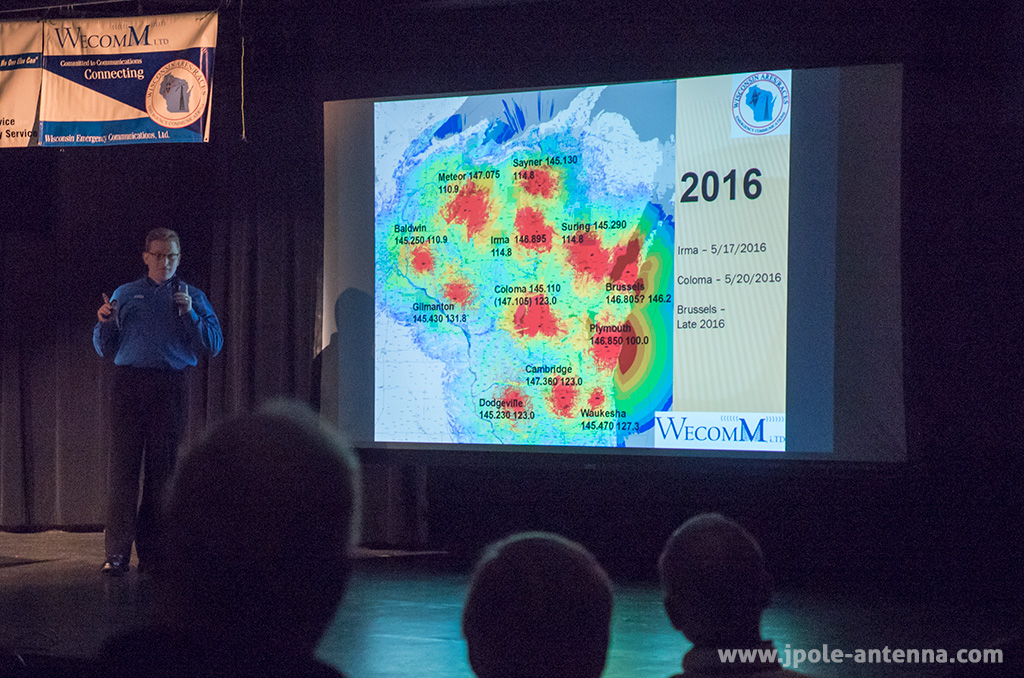
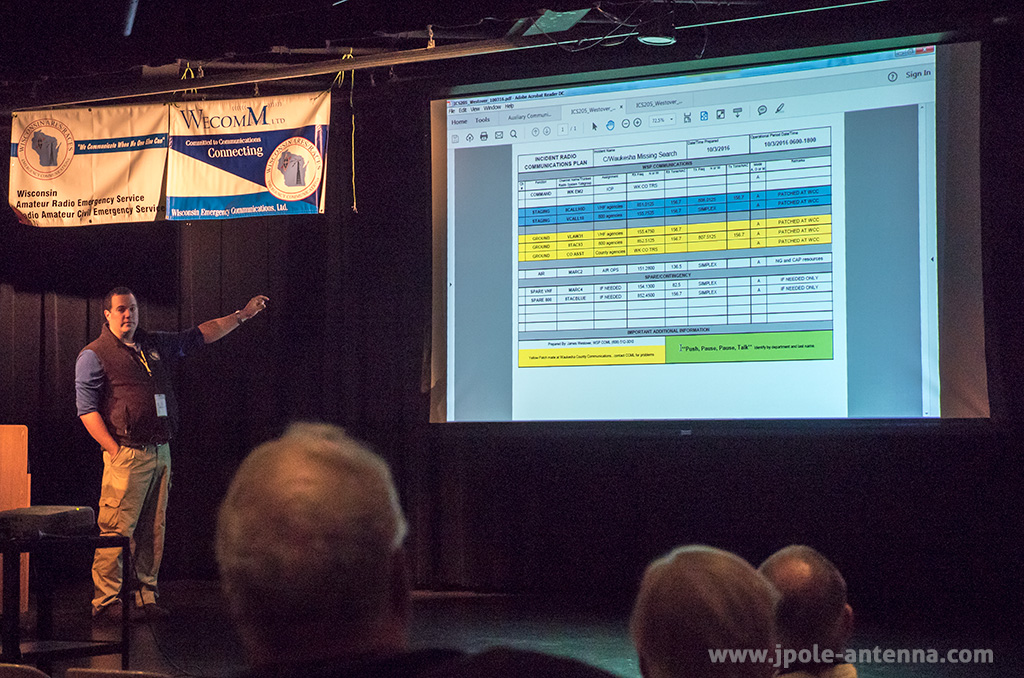
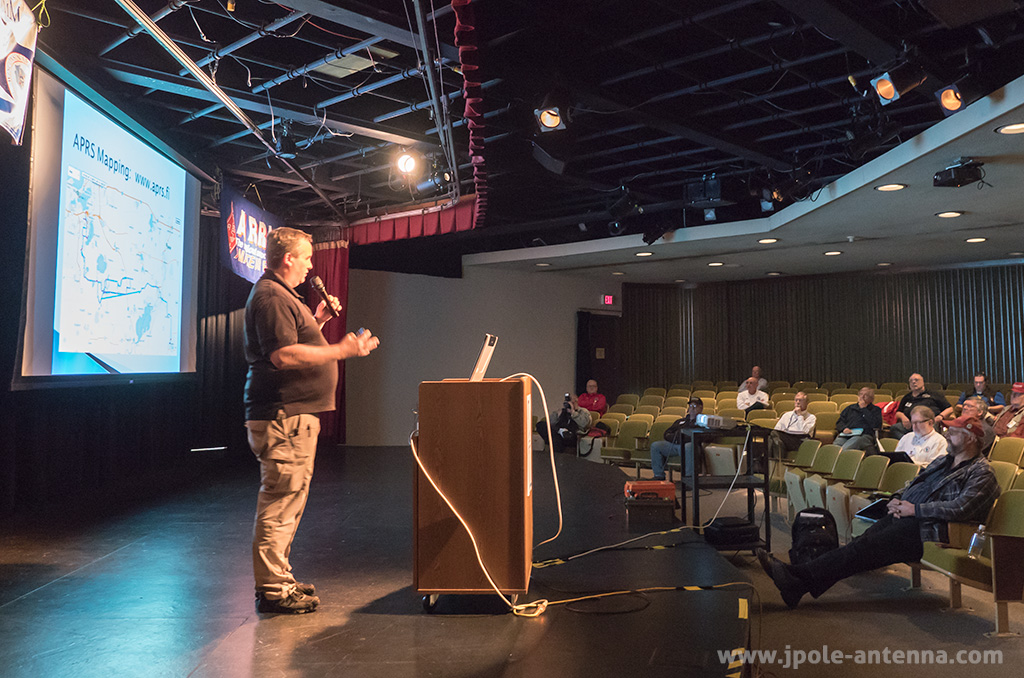
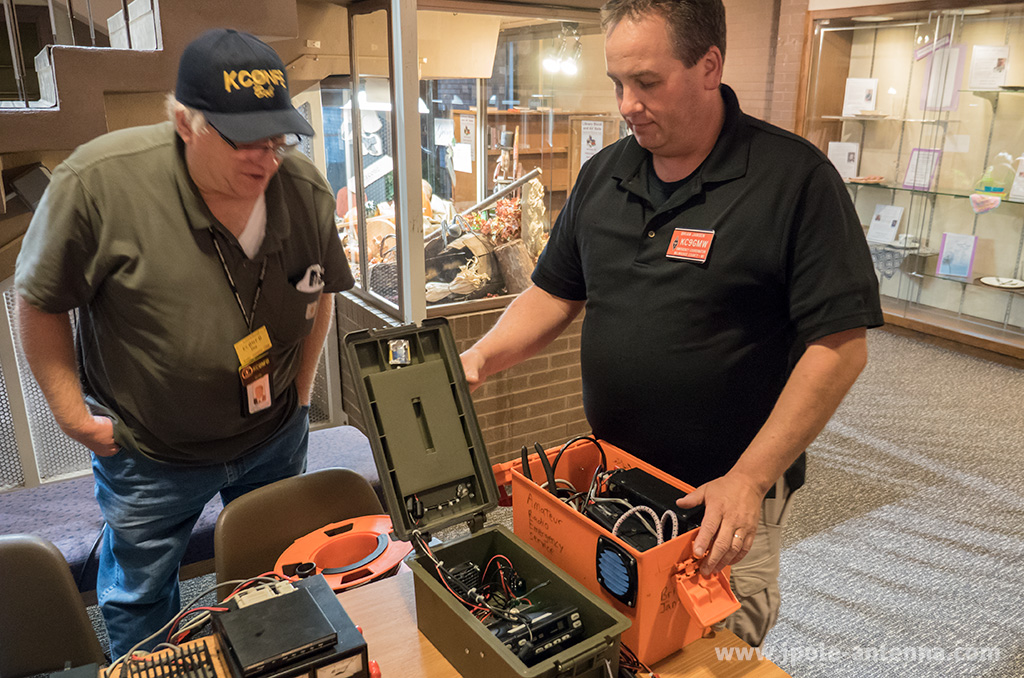
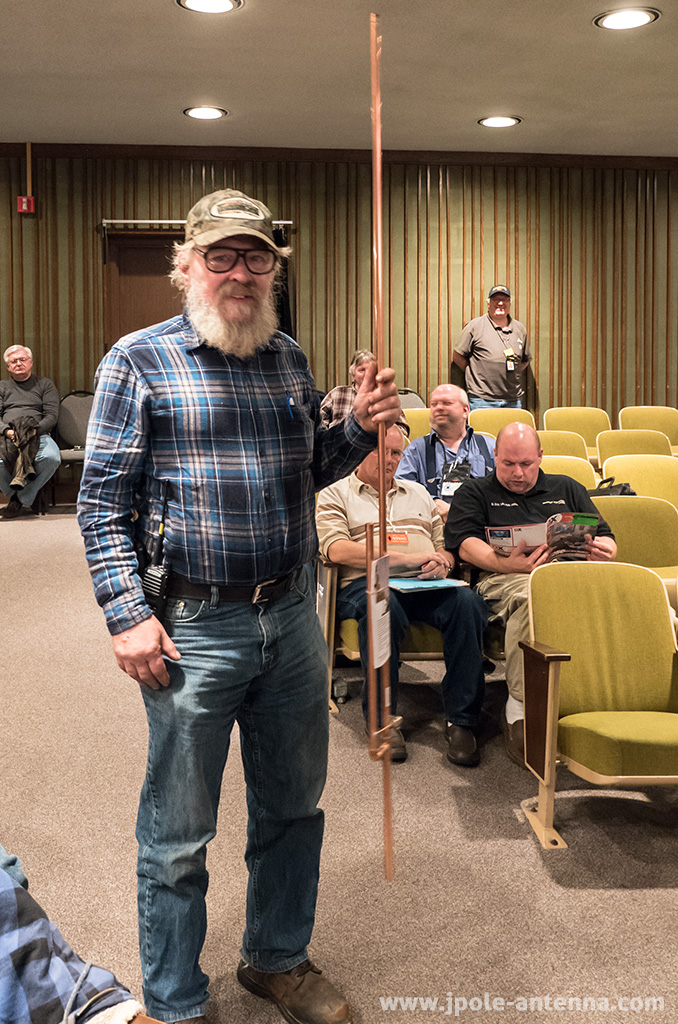
Recent Comments